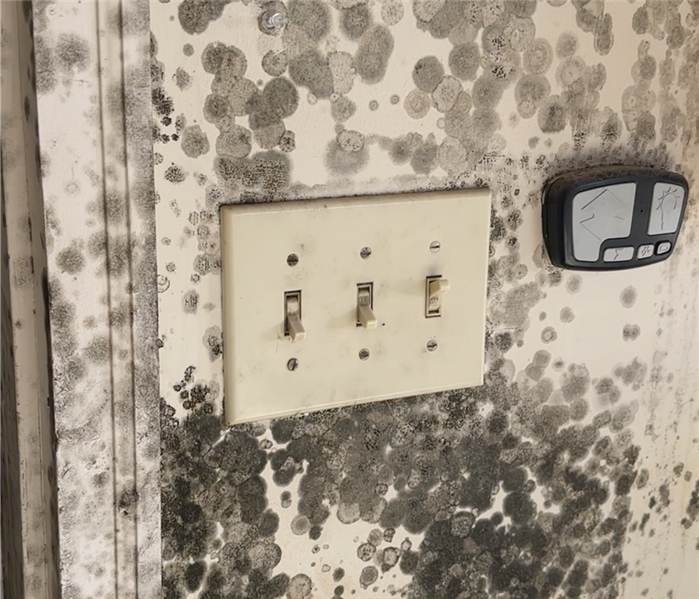How do you get rid of mold in a shower?
11/13/2024 (Permalink)
 While DIY methods can help with minor mold issues, severe or recurring mold problems may require professional intervention.
While DIY methods can help with minor mold issues, severe or recurring mold problems may require professional intervention.
Mold in your shower is a common problem, especially in high-moisture areas like Lake Arlington. Knowing how to get rid of mold in a shower is crucial to maintaining a clean and safe home. As experts in water damage and mold remediation, SERVPRO of Lake Arlington provides insight into the best methods for removing mold from your shower and preventing it from coming back.
What Causes Mold to Grow in Showers?
Mold thrives in damp, humid environments, which makes your shower the perfect breeding ground. The combination of warm temperatures, soap scum, and moisture creates the ideal conditions for mold growth, especially in the grout and caulking of your shower. To effectively remove mold, you need to understand its root causes and address them properly.
Best Methods for Removing Mold from Your Shower
There are several effective DIY methods you can use to tackle mold in your shower. Here’s a step-by-step approach:
- Scrub with Baking Soda and Vinegar: Start by mixing baking soda and white vinegar to create a paste. Apply this mixture to the moldy areas, especially in the grout and caulking. Let it sit for 10-15 minutes before scrubbing with a brush. This method is highly effective because baking soda is abrasive, and vinegar is a natural mold-fighting agent.
- Use Bleach: A solution of one part bleach to ten parts water can also help remove mold. Apply the solution to the affected area and let it sit for 15 minutes before rinsing. Remember to use proper ventilation when working with bleach.
- Apply a Commercial Mold Remover: There are plenty of mold-removal sprays available that are specifically designed for showers. Follow the manufacturer’s instructions for the best results.
- Reseal Your Grout and Caulking: After cleaning, consider resealing your shower’s grout and caulking to prevent mold from returning. Silicone-based sealants are especially effective in preventing moisture buildup.
Mold Prevention Tips
Did you know that the average household bathroom has a humidity level of 70% after a shower? According to the U.S. Environmental Protection Agency (EPA), keeping humidity levels below 60% is key to preventing mold growth. Here are some preventive measures you can take:
- Use a bathroom exhaust fan to reduce moisture.
- Wipe down your shower walls after each use.
- Leave your shower door or curtain open to allow air circulation.
- Clean and reseal grout and caulking regularly.
Trust the Experts at SERVPRO of Lake Arlington
While DIY methods can help with minor mold issues, severe or recurring mold problems may require professional intervention. At SERVPRO of Lake Arlington, we offer expert mold remediation services to ensure your shower stays mold-free for good. Whether you need advice or a full-scale mold removal, our experienced team is ready to help.




 24/7 Emergency Service
24/7 Emergency Service